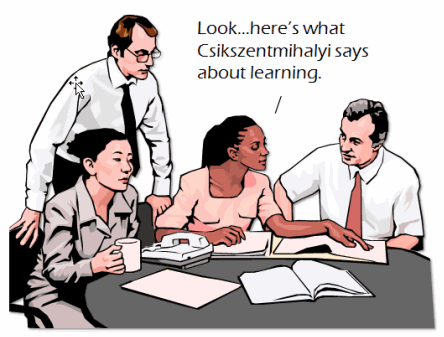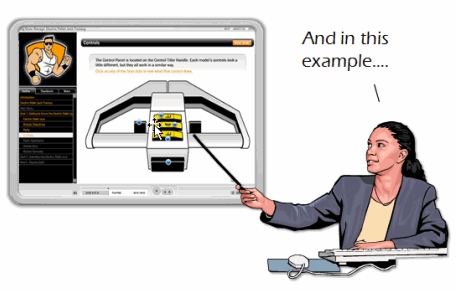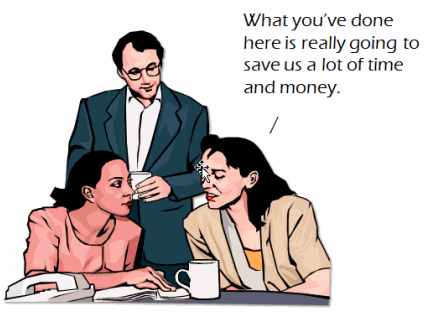At a recent conference, we were asked what typically held up the production process for elearning courses. The number one response was working with the subject matter expert. This makes sense since they play such a critical role in the course’s success.
The subject matter experts know the content and understand the work environment. Because of this, much of your project hinges on their time and the commitment they make to the project. The challenge is that our subject matter experts are like the rest of us and just don’t have a lot of time to spare.
Since it is so critical to your success, now’s a good time to look at some ways to manage the relationship with your subject matter expert (SME).
Don’t expect your SME to be an expert at learning theory.
I’ve been in meetings where the elearning design team goes round and round with the SME about "real learning." They’ll throw out names like Gagne and Bloom. A brave one might even slip in learning theorist, Mihaly Csikszentmihalyi. That’s not going to work. We don’t want to come off as elitist know-it-alls. Instead, we want to create great elearning. Skip the name dropping.

Most likely your subject matter experts’ understanding of elearning is driven by two things: their gut and a course structure they’re familiar with.
The biggest issue isn’t their gut instincts. They might not know all of the ins and outs of learning theory, but they’ll have a general sense of what works and what doesn’t. The challenge for you is that most people copy what they’re familiar with. So you’ll get a SME who probably wants a course that looks and feels like all of the other elearning courses they’ve taken.
Considering that a lot of elearning courses are basic click-and-read they might not be expecting more than that. So the odds are that the course they envision is heavy on information and light on interaction. The good thing is that most people don’t like that type of elearning, even the SME. They just don’t know the difference. That’s where you come in.
Present some good examples of what you think will work.
Most likely what they know about elearning is based on the elearning they’ve taken. By showing them examples of different types of elearning, you’ll be able to shape their understanding and help create expectations for a different approach. If you want more than a click-and-read course, you have to show them an example of something different.

Ideally you want them to focus less on the information and more on making the information meaningful. So, don’t focus on the multimedia bells and whistles. Instead focus on relevant interactivity. Show them examples that demonstrate how the learner learns more through the interaction.
But don’t expect them to sit through a 30 minute course. Instead, point them to what you like and why you think it will be good for their course. Also, don’t bombard them with 20 things. A good rule of thumb is to present three treatments so that they can get their heads around the ideas and not feel overwhelmed.
Everyone is working for the organization’s success.
The organization defines success by reaching it’s goals in a cost effective and efficient manner. You can contribute to this.
Fundamentally, instructional design is about crafting a learning environment that produces successful results. This means more than just converting a PowerPoint slideshow to Flash. Success comes when you can connect the course content to the learner’s world so that the learner is able to do something new or better.
One of the best ways to save time and money on your projects is to establish clear expectations. Like you, the SME typically doesn’t have a lot of time. Many times, they’re not even part of the project team; they’re just told to give you information. So working with you is an excursion away from their normal responsibilities and a drain on their limited time. You can control the time requirements by setting clear expectations that include agreed upon timelines and action items.
People like to be recognized. A great way to get the SME attention and support is to send a glowing email to the person’s manager and CC the SME. This has never failed me. Doing this will help you when you need some of the extra time from the SME for reviews or follow up.

Make sure that your efforts make sense. Early in my career I was working on a course in a production environment. As I was wowing them on the production floor with all of my fancy ideas about learning, one of the senior technicians facetiously asked, "You’re one of those college educated people, huh?"
I got it. I over-engineered the elearning. I tried too hard to make it "fancy" and not hard enough to make it a good course that met their needs. Ultimately this impacts how people view your contribution. Instead of being seen as a valued partner, you’re seen as someone they have to tolerate or worst case, a nuisance because you don’t bring real value and waste time.
A critical facet in managing your elearning project is managing the relationships with people who support it. If you want your project to be successful, you need to establish a good working relationship with your subject matter experts. They play a key role in the content you need, how you design your course, and whether the course succeeds or not.
What are some things you’ve done to help manage the relationship with your subject matter experts? Leave a comment here.
Events
Free E-Learning Resources


















0
comments